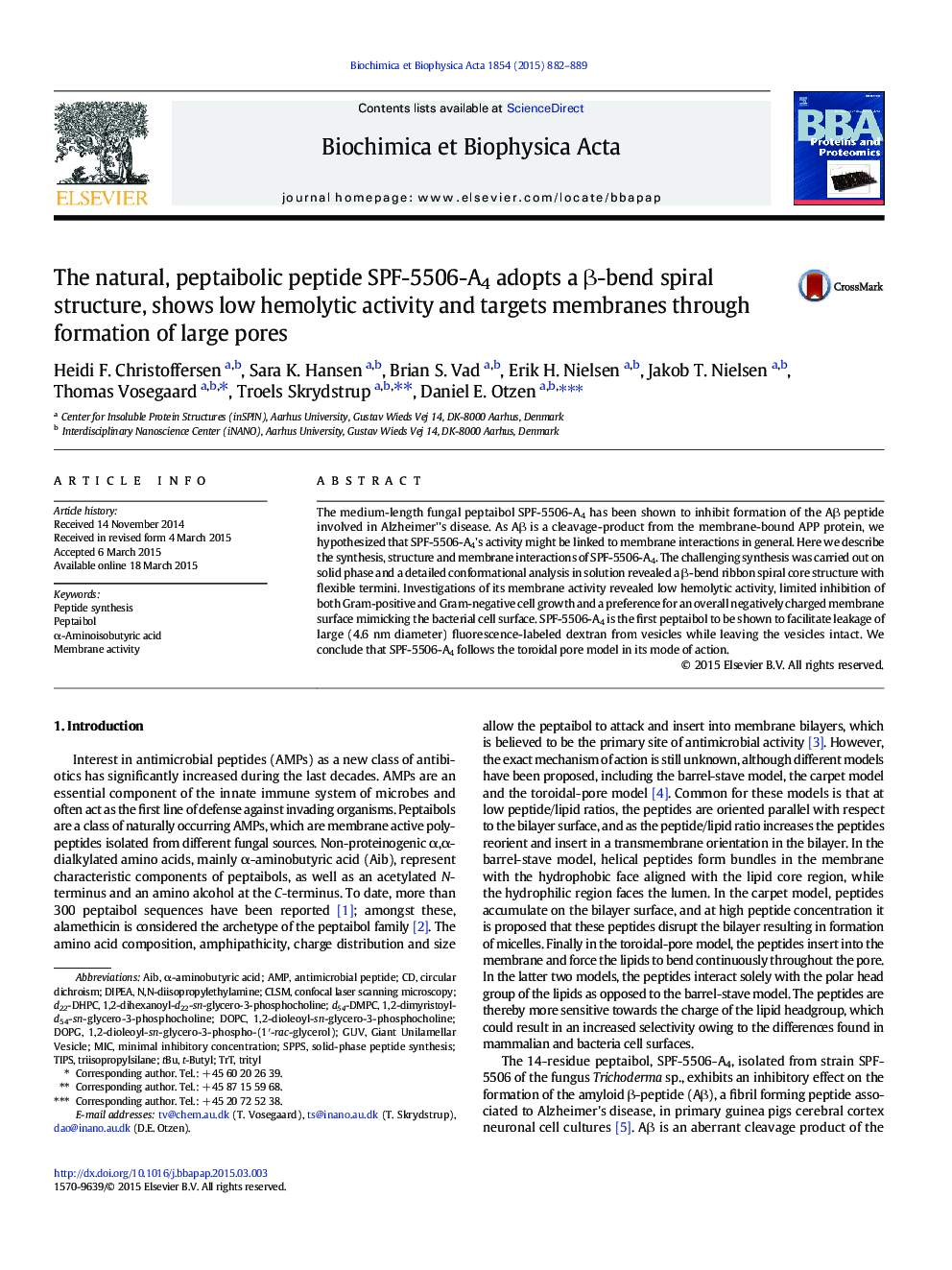| Article ID | Journal | Published Year | Pages | File Type |
|---|---|---|---|---|
| 1177795 | Biochimica et Biophysica Acta (BBA) - Proteins and Proteomics | 2015 | 8 Pages |
•Successful solid phase synthesis of 14-residue Trichoderma peptaibol SPF-5506-A4.•Solution NMR reveals β-bend ribbon spiral core structure with flexible termini.•SPF-5506-A4 shows low hemolytic activity and preferentially binds anionic membranes.•The peptaibol forms large (> 4.6 nm) non-lytic pores in the membrane.•SPF-5506-A4 follows the toroidal pore model in its mode of action.
The medium-length fungal peptaibol SPF-5506-A4 has been shown to inhibit formation of the Aβ peptide involved in Alzheimer'’s disease. As Aβ is a cleavage-product from the membrane-bound APP protein, we hypothesized that SPF-5506-A4's activity might be linked to membrane interactions in general. Here we describe the synthesis, structure and membrane interactions of SPF-5506-A4. The challenging synthesis was carried out on solid phase and a detailed conformational analysis in solution revealed a β-bend ribbon spiral core structure with flexible termini. Investigations of its membrane activity revealed low hemolytic activity, limited inhibition of both Gram-positive and Gram-negative cell growth and a preference for an overall negatively charged membrane surface mimicking the bacterial cell surface. SPF-5506-A4 is the first peptaibol to be shown to facilitate leakage of large (4.6 nm diameter) fluorescence-labeled dextran from vesicles while leaving the vesicles intact. We conclude that SPF-5506-A4 follows the toroidal pore model in its mode of action.
Graphical abstractFigure optionsDownload full-size imageDownload high-quality image (70 K)Download as PowerPoint slide
